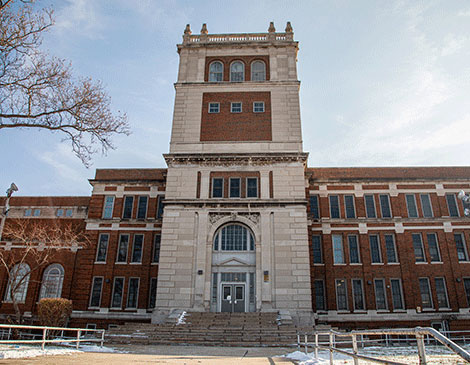It’s been eight years since The Cleveland Plan was enacted to increase the Cleveland Metropolitan School District’s high-performing schools and eliminate struggling ones.
Now, an updated facilities plan should move the district one step closer to that goal.
Faced with under-enrolled schools and aging buildings, the Board of Education unanimously approved a consolidation proposal last year. With school closures, consolidations and new construction in the works, the plan should mean less unused space and a better education for students.
With these changes set for the 2020-21 school year, CMSD CEO Eric Gordon tells us what the community needs to know about the future of Cleveland schools. “These were difficult decisions,” he says, “but our goal is to get as many students as possible into the highest performing schools.”
Collinwood Saved ... For Now
Even with enrollment dropping from 3,000 to 200, the Collinwood community successfully fought for the historic high school’s survival. Gordon postponed the 1924-built school’s closure for one year, tasking a Friends of Collinwood group to recruit more students, create manufacturing pathways and explore mixed-use options for the East Side building. “If we see meaningful progress, we can continue down this road,” says Gordon.
Glenville Consolidation
Glenville High School and Hough’s Martin Luther King Jr. High School were built for thousands of students, but their current combined enrollment is under 700. It’s also a district-wide problem, with 40% of high school seats unused. This fall, the two schools will consolidate to form a career and college hub. “We’re moving health care and public safety pathways from MLK to Glenville,” says Gordon. “We’ll also have additional pathways, like welding [at Glenville].”
K-8 Shake-Up
CMSD will close four old, under-enrolled elementary and middle school buildings on the East Side — Case, Iowa-Maple, Michael R. White and Willow — sending about 900 students to new schools. “We already have modernized schools with available space in those same neighborhoods,” Gordon points out. Clark and Walton elementary schools will also consolidate at the original Clark site, which holds enough room to construct a much-needed new facility.
Tech-Centric
East Tech, and its spacious campus in the Central neighborhood, will absorb the agriscience-focused Washington Park Environmental Studies and Jane Addams Business Careers Center, including the latter’s hospitality program and student-run restaurant. “Washington Park could become a career center,” says Gordon, “where kids come part-day after classes.” Plus, the larger enrollment at East Tech should pay off with stronger academics and athletics.




